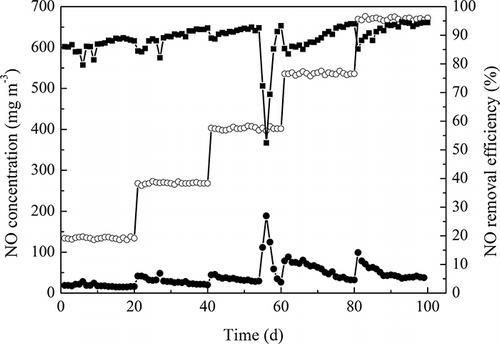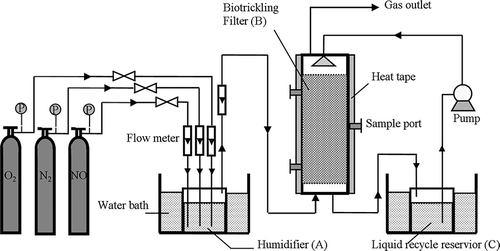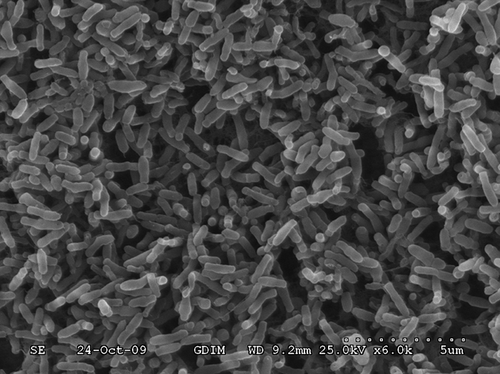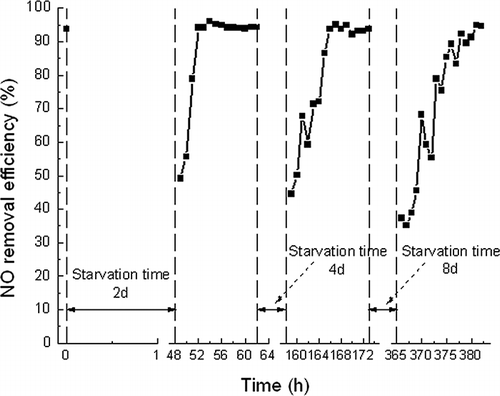Figures & data
Table 1. Taxonomical characteristics of the thermophilic aerobic denitrifying TAD1
Figure 3. Phylogenetic tree based on a comparison of the 16 S rRNA gene sequence. The phylogenetic tree was generated using the neighbor-joining method. Bootstrap values, expressed as percentages of 1000 replications, are given at branching points. Bar shows 10 nucleotides substitutions per 1000 nucleotides.
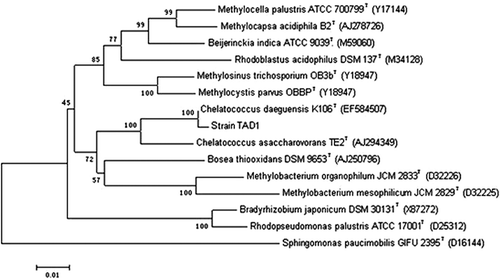
Figure 4. Changes in cell density and nitrate plus nitrite concentration of C. daeguensis TAD1 in batch culture at 50 °C. Symbols: Δ, NO3 −-N concentration; ○, NO2 −-N concentration; □, optical density of bacteria.
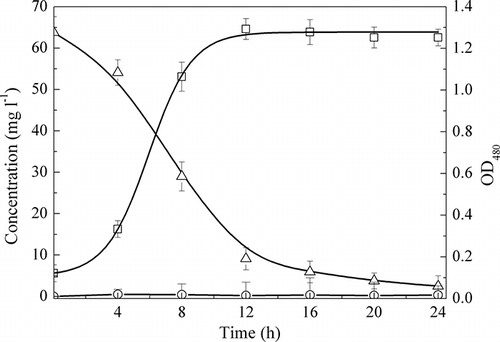
Figure 5. NO removal efficiency and plate counts of biofilm samples (Bs) during startup of BTF. ▪, plate counts of biofilm samples (Bs); □, NO removal efficiency.
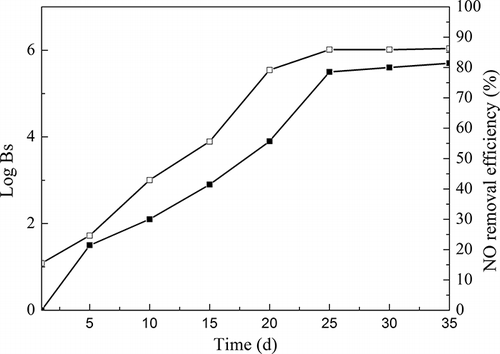
Figure 6. SEM micrographs of microorganisms grown on the porous ceramic particles surfaces after 35 days of NO treatment.
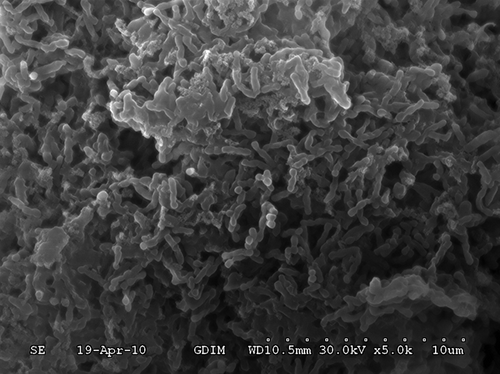
Figure 7. The total performance of the biotrickling filter for NO removal with different NO loading (T = 50 °C, O2 concentration was around 8%, inlet gas was 1 L min−1, the trickling rate was 200 mL min−1, EBRT was 115 sec). ○, inlet gas concentration; •, outlet gas concentration; ▪, NO removal efficiency.
